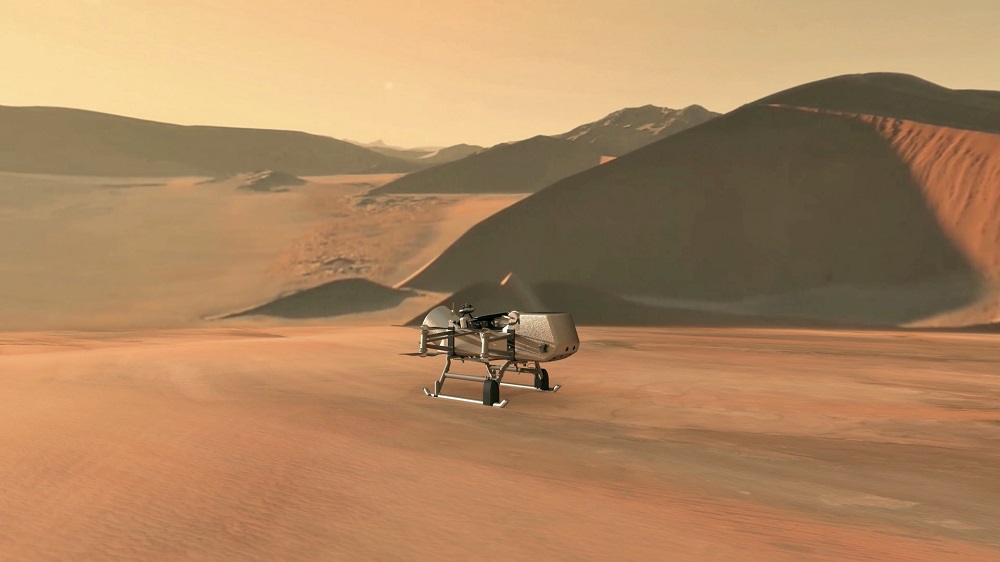Drones to go interplanetary with NASA's Dragonfly
30 June, 2019
3 min read


Drones are already ubiquitous on Earth but they’re about to turn interplanetary with a planned mission called Dragonfly to Saturn’s biggest moon.
NASA has announced its next new destination will be Titan and it will use a drone to fly to dozens of locations on the mysterious ocean world in search of the building blocks of life.
Titan, which is bigger than the planet Mercury, is believed to be similar to the very early Earth and scientists hope to find prebiotic chemical processes that will provide clues to how life started here.
The Dragonfly mission will launch in 2026 and arrive at Titan in 2034.
It will take advantage of 13 years of data gathered during the Cassini mission to choose a calm weather period to land, initially at the equatorial “Shangri-La” dune fields which resemble dunes in Southern Africa.
Dragonfly will have eight rotors and operate as a large drone. It marks the first time NASA has used a multi-rotor vehicle for science on another planet.
The space agency said the drone would take advantage of an atmosphere that is four times denser than Earth’s to fly its science payload to multiple destinations.
This would initially be a series of short hops building up to a series of up to five-mile (8km) flights that would cumulatively see it travel more than 108 miles (175kms), almost twice as far as the distance traveled by all the Mars rovers combined.
NASA said a 2.7-year baseline mission will see Dragonfly explore environments ranging from organic dunes to the floor of an impact crater where liquid water and complex organic materials may have existed together for tens of thousands of years.
“With the Dragonfly mission, NASA will once again do what no one else can do,” said NASA administrator Jim Bridenstine.
READ: Boom remains upbeat on delayed supersonic airliner.
“Visiting this mysterious ocean world could revolutionize what we know about life in the universe.
“This cutting-edge mission would have been unthinkable even just a few years ago, but we’re now ready for Dragonfly’s amazing flight.”
The drone will have some tough conditions to navigate: the surface temperature on Titan is about minus 290F (-179C) and its surface pressureis 50 percent higher than Earth's.
It has a nitrogen-based atmosphere but clouds and rain of methane, while other organics in the atmosphere fall like light snow.
Dragonfly was selected as part of NASA’s New Frontiers program, which includes the New Horizons mission to Pluto and the Kuiper Belt, Juno to Jupiter, and OSIRIS-REx to the asteroid Bennu.
It is led by principal Investigator Elizabeth Turtle, who is based at Johns Hopkins University’s Applied Physics Laboratory in Laurel, Maryland.
Next Article
3 min read
Virgin gets nod for Tiger deal

Get the latest news and updates straight to your inbox
No spam, no hassle, no fuss, just airline news direct to you.
By joining our newsletter, you agree to our Privacy Policy
Find us on social media
Comments
No comments yet, be the first to write one.
